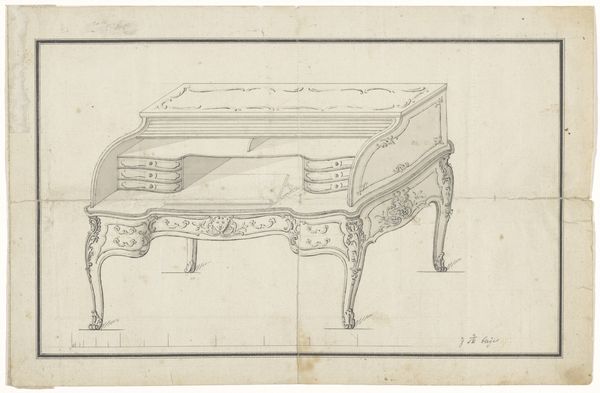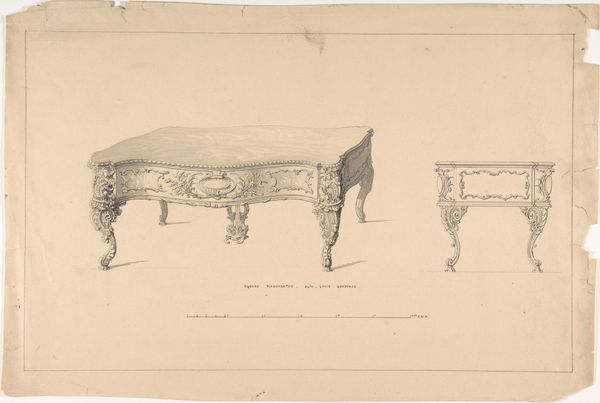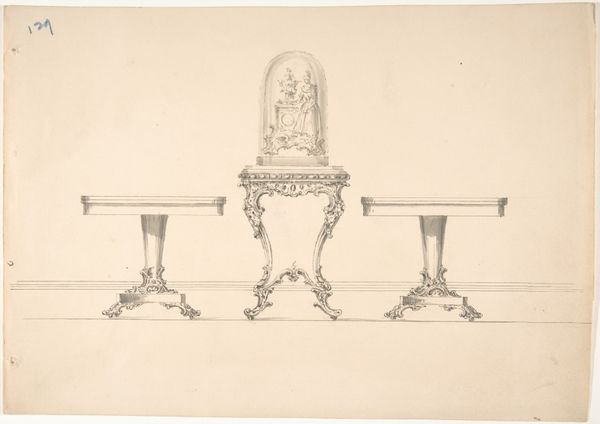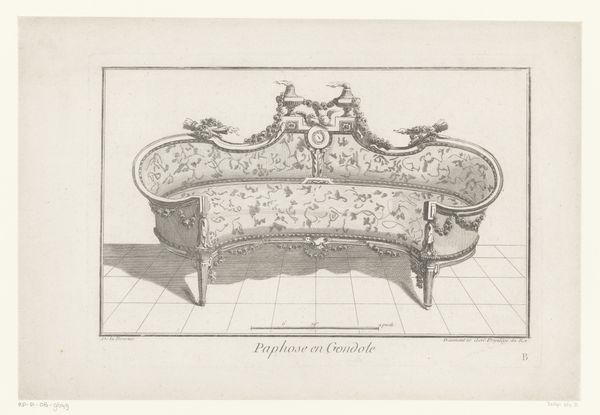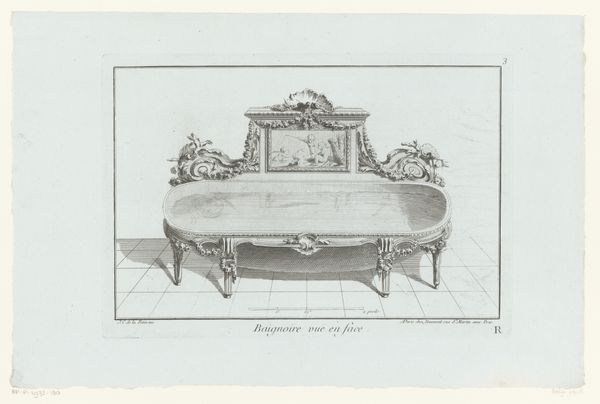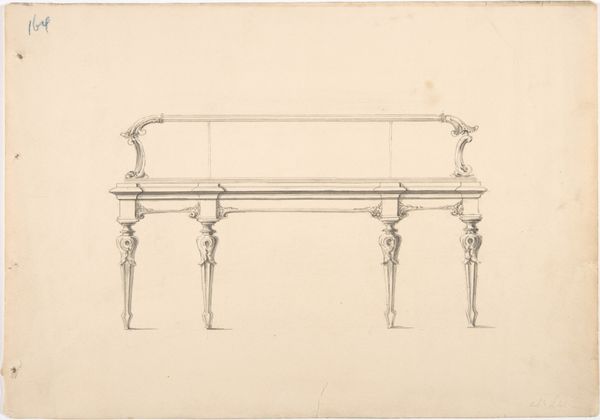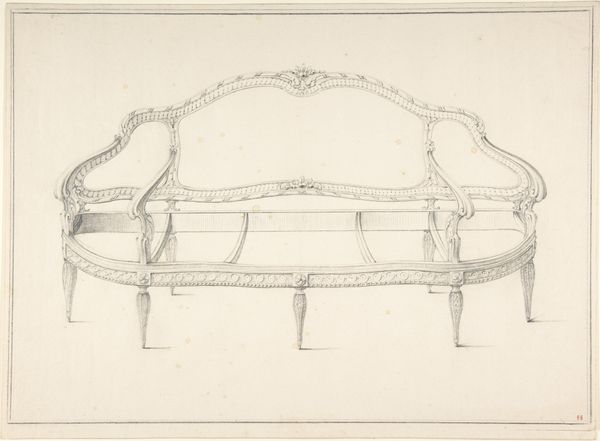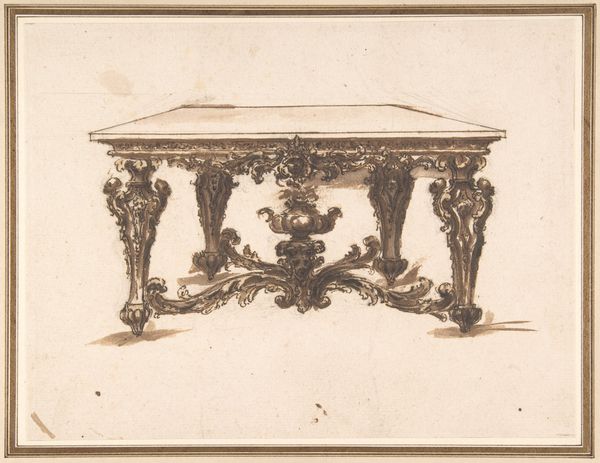
drawing, print, pencil
#
drawing
# print
#
pencil sketch
#
geometric
#
pencil
#
academic-art
Dimensions: sheet: 10 x 12 3/8 in. (25.4 x 31.4 cm)
Copyright: Public Domain
Editor: We’re looking at a pencil drawing and print entitled "Design for a Loveseat," made sometime between 1841 and 1884 by Charles Hindley and Sons. It’s currently located at the Metropolitan Museum of Art. It’s intricate but feels…static. How do you interpret this work through a Formalist lens? Curator: Let us consider the formal elements, setting aside any impulse toward historical context or social meaning. Notice first the clear delineation of form, the meticulous draftsmanship defining the curves and counter-curves. The eye is guided relentlessly by line. Do you observe how the geometric foundation contends with organic flourishes? Editor: Yes, the rigid structure of the loveseat fights against the swirling, almost floral carvings. It feels unbalanced, almost a study in contrasts. Curator: Precisely. The chiaroscuro, while subtle, introduces a depth, a dimensionality that plays with the two-dimensional surface. It's not simply a rendering of an object, but an exercise in translating volume through tonal variation. Do you find the overall composition resolved or fragmented? Editor: Fragmented, I think. The loveseat seems isolated, devoid of setting. The eye jumps between the detailed legs, the seat, and the ornamented back, never quite settling. What do you think that fragmentation contributes to the drawing overall? Curator: It emphasizes the constructed nature of the design. This is not a naturalistic depiction but an assemblage of forms, each presented for scrutiny. It highlights the act of designing itself, stripping away any pretense of function in favour of pure visuality. It compels us to confront its status as drawing, as sign. Editor: I see. So, by focusing on the line, form, and composition, we uncover a work more about the principles of design than the object it portrays. I never considered the drawing itself to be the actual art piece, not just a depiction of one! Curator: Indeed. Sometimes, the true subject of the artwork is not the subject at all, but the exploration of art's formal language.
Comments
No comments
Be the first to comment and join the conversation on the ultimate creative platform.
